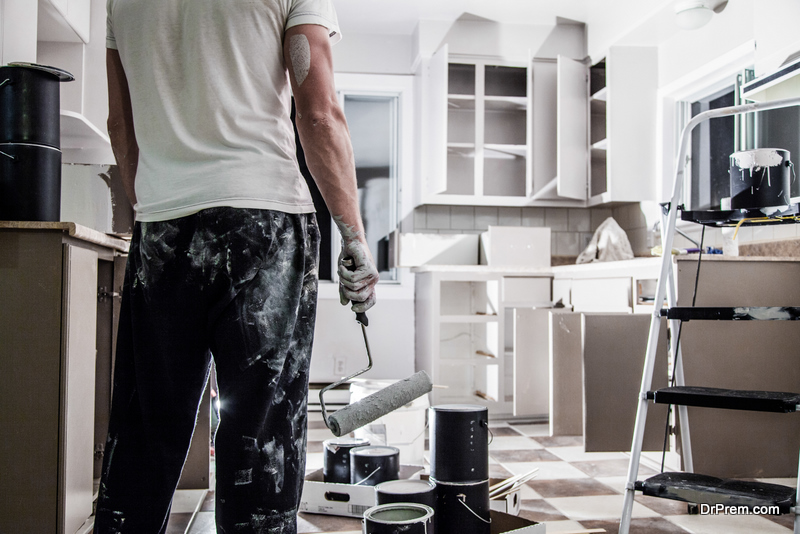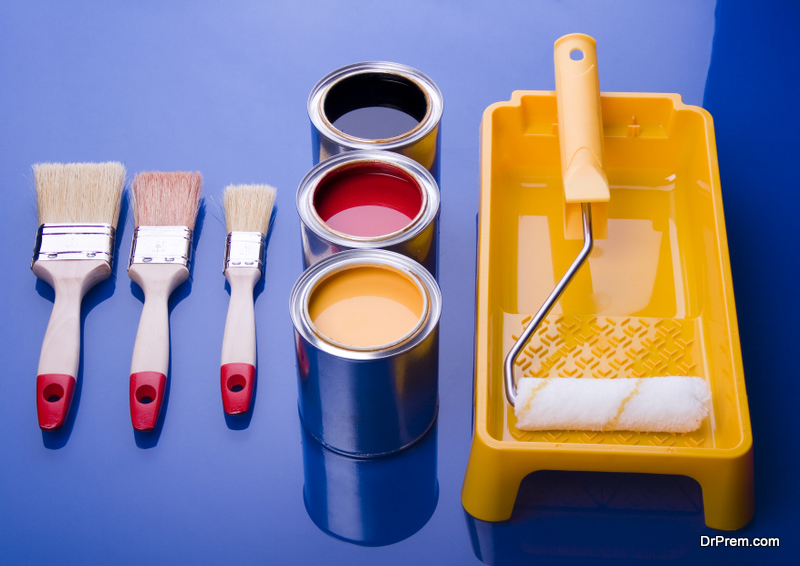Anyone wants their kitchen to invite productivity. This can be done by having it renovated or repurposed. However, the said suggestions can be expensive and a hassle on your part. Fortunately, there’s still a cheaper way to have your kitchen look fully functional, allowing you to be motivated and inspired to cook: a thorough paint job.
Painting your kitchen brings plenty of benefits. For one, you get to be motivated to spend time in your kitchen space as you’re now truly comfortable with the aesthetics that a fresh coat of paint brings. Thus, if you think your kitchen is up for a paint job, here’s how you can do it successfully:
1. Perform a Thorough Inspection
 Before bringing in the brush and jars of paint, it’s important that you conduct a thorough inspection first. This means that you must check for flakes, cracks, or peelings, all of which require you to sand or scrape.
Before bringing in the brush and jars of paint, it’s important that you conduct a thorough inspection first. This means that you must check for flakes, cracks, or peelings, all of which require you to sand or scrape.
Sanding or scraping these impurities before applying a reputable paint brand, like Regal Select, and primer allows both to have a smooth and clean surface to stick to. If you don’t check for things that need to be sanded, then you may just end up with paint blots, which is a mark of an unsuccessful paint job. In addition to the walls and cabinets’ impurities, also check for grease spots. These spots need to be washed with soap and water.
If you don’t have any of these problems, give your walls or cabinets a wipe using a damp cloth. This way, the paint will have a dust-free surface to stick to, which is aesthetically beneficial in the long run.
2. Apply a Primer
Now that the first step is done, the next thing to do to have a successful kitchen paint job is to apply the foundational coat, which is commonly known as the primer. Doing so will improve the paint coat’s adhesion to any of your kitchen’s surfaces. Also, a primer will prolong the paint’s lifespan as it may help delay any peeling.
Take note that you can’t just buy any primer that you see in the hardware store. This is because a primer’s effectiveness will depend on the type of surface that you’re planning to paint. Thus, to help you out, here are the types of surfaces, along with the types of primer you should use:
- Bare wood: This may be the material for your countertops or any table. For this, it’s best to opt for an oil-based primer. An oil-based primer will help keep any tannin present in the wood from bleeding through, which will stain the finishing touches of your paint.
- Unpainted metal: You can still use an oil-based primer for this type of surface.
- Glossy surface: For this, you can choose either water- or oil-based bonding primer, both of which are designed for this type of surface.
3. Select The Right Type Paint
Now that the primer is already applied, you have to decide on a high-quality paint to use and the color.
-
Type Of Paint
 Essentially, you can use either oil-based paint or latex paint. The former is the most recommended type of paint to use in the kitchen since it’s both stain- and moisture-resistant, which makes it perfect in areas where water and splashes are always present, like your kitchen. Additionally, oil-based paint is long-lasting.
Essentially, you can use either oil-based paint or latex paint. The former is the most recommended type of paint to use in the kitchen since it’s both stain- and moisture-resistant, which makes it perfect in areas where water and splashes are always present, like your kitchen. Additionally, oil-based paint is long-lasting.
However, oil-based paint takes too long to dry, which isn’t ideal if your kitchen is always busy. Also, this type of paint may contain more chemicals than its alternative. If you can’t deal with these cons, then consider latex paint. But, do note that latex paint is less durable compared to oil-based paint. Still, it’s available in VOC-free formulas, which is perfect if you’re prone to allergies or you don’t like the smell of paint.
-
Color
As for your kitchen’s paint color, you can settle for neutral tones, like cream, if you’re going for a traditional look. You can also go for slate if you want a modern-looking kitchen. Of course, no one is stopping you from choosing both cream and slate, especially if you want a combination of the traditional and modern kitchen.
Remember, your paint colors should complement the walls, floors, and countertops. Also, keep in mind that lighter shades will provide the illusion of space and light, but it can emphasize any stain, which is imminent in a space like a kitchen. Darker colors, on the other hand, may give you a heady and intimate vibe, but it’s not perfect if you have a small kitchen as it’ll make it tighter and narrower.
Takeaway
As the busiest part of the house, your kitchen deserves a makeover, especially if it’s already long overdue. To save money and time, you must paint your kitchen the right way on your first try. For a successful job, follow the tips mentioned above.
Article Submitted By Community Writer




